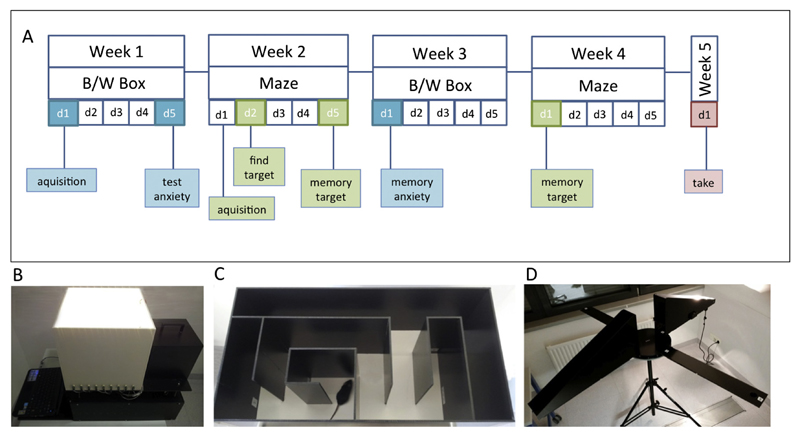Fig. 1.
Experimental design. Anxiety was assessed using the black/white (B/W) box, also known as the light/dark exploration test. This model consists of two inter-connected compartments that vary in color (white/black) and illumination (light/dark) (B). In the first week (day 1) mice were adapted to the environment and the researcher; anxiety was recorded on day 5. Memory of anxiety was tested in week 3 on day 1 (A). Spatial learning and memory were assessed in a well-established simple classical mouse labyrinth (C). On the first day of week 2 mice were adapted to a classical labyrinth maze and the environment. On day 2 (week 2) mice were conditioned to find a target (28 ± 2 mg chocolate, Ferrero© Nutella). The memory for finding this target was recorded on day 5 (week 2) as well as in week 4 on day 1 (A). Figure D shows the setup of the plus maze discriminative avoidance task. The training and the test session were performed on two consecutive days.

